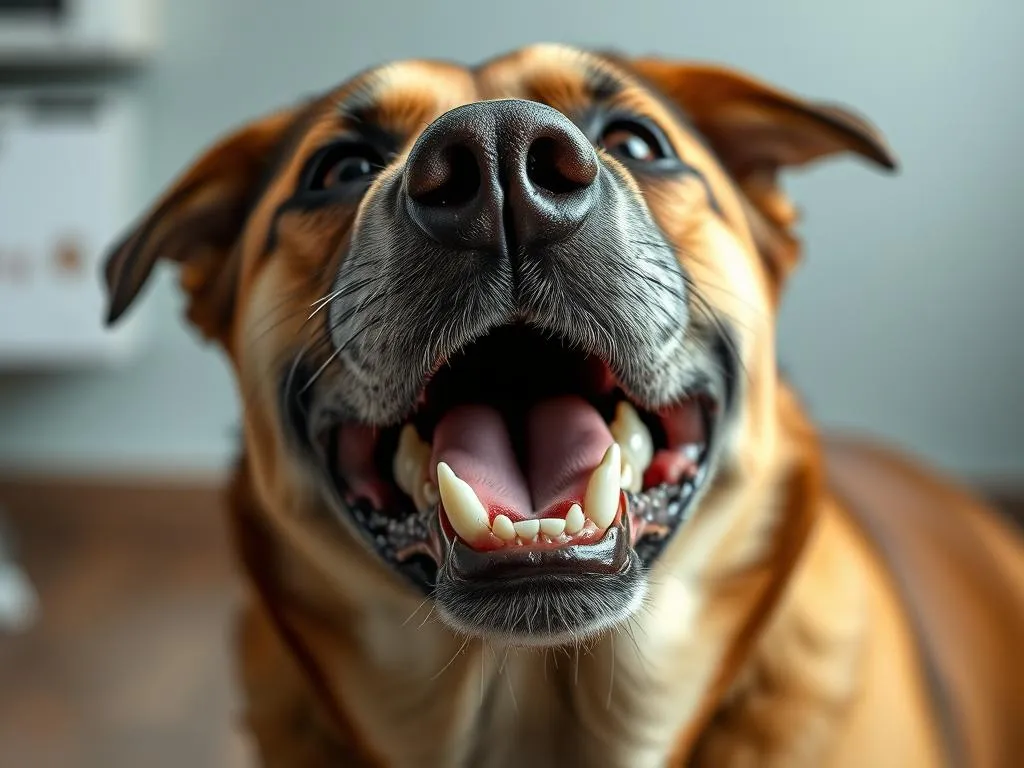
Introduction
Dental health is a crucial aspect of a dog’s overall well-being. Just like humans, dogs can suffer from a variety of dental issues, including broken teeth. As a dog owner, understanding is a broken dog tooth an emergency is vital for ensuring your furry companion’s health. Timely veterinary care can significantly impact not only the condition of your dog’s mouth but also their overall health. This blog post will delve into the importance of dental care for dogs, how to identify a broken tooth, and when to seek emergency treatment.
Understanding Dog Dental Health
Importance of Dental Care for Dogs
Maintaining good dental health in dogs has several benefits. Proper dental care helps prevent bad breath, gum disease, and tooth loss, which can lead to discomfort and pain for your pet. Moreover, there’s a significant link between a dog’s oral health and their overall health. Dental diseases can lead to systemic issues, affecting organs such as the heart and kidneys. Common dental problems in dogs include periodontal disease, gingivitis, and tooth fractures.
Anatomy of a Dog’s Tooth
Understanding the anatomy of a dog’s tooth can help pet owners recognize dental issues more effectively. A dog’s tooth consists of several parts:
- Enamel: The hard, outer layer that protects the tooth.
- Dentin: The layer beneath the enamel, which is softer and more sensitive.
- Pulp: The innermost part that contains blood vessels and nerves.
Each component plays a vital role in the function and health of the tooth. When a tooth is broken, it can affect these layers, leading to various complications.
Identifying a Broken Dog Tooth
Signs and Symptoms of a Broken Tooth
Recognizing the signs of a broken tooth is essential for prompt treatment. Common indications include:
- Pain: Your dog may show signs of discomfort when chewing or when you touch their mouth.
- Bleeding: Blood may be present in the mouth or on your dog’s toys.
- Difficulty Eating: Reluctance to eat or changes in eating habits can indicate pain.
- Behavior Changes: Increased drooling, reluctance to play, or changes in temperament may also signal dental issues.
Types of Tooth Injuries
Tooth injuries can vary in severity. Here are some types of tooth injuries to be aware of:
- Minor Fractures: Small chips that may not cause immediate pain but can lead to further complications if left untreated.
- Major Fractures: Larger breaks that expose the pulp, causing intense pain and requiring immediate veterinary attention.
- Impacted Teeth: Teeth that are unable to erupt properly, which can lead to infection or abscess.
- Root Fractures: Breaks that occur below the gum line, often difficult to detect without X-rays.
Understanding the type of injury helps in assessing the urgency of the situation.
Assessing the Emergency
When to Consider a Broken Tooth an Emergency
Determining whether a broken tooth constitutes an emergency depends on several factors. Here are some criteria to consider:
- Severe Pain: If your dog is showing signs of extreme discomfort or pain, it’s crucial to seek veterinary care.
- Signs of Infection: Swelling, discharge, or persistent bleeding can indicate an infection, necessitating immediate attention.
- Behavioral Changes: If your dog becomes lethargic or refuses to eat, these changes can signal a serious issue.
In contrast, minor dental trauma without significant pain or swelling may be less urgent but still requires veterinary evaluation.
Consequences of Ignoring a Broken Tooth
Ignoring a broken tooth can lead to severe complications. Potential issues include:
- Infections: Bacteria can enter through the fracture, leading to abscesses or systemic infections.
- Tooth Loss: Untreated fractures can result in loss of the tooth and require extraction.
- Long-Term Health Implications: Ongoing dental issues can affect your dog’s overall health, leading to complications in other organs.
Prompt attention to dental issues can prevent these complications and improve your dog’s quality of life.
Immediate Actions to Take
First Aid for a Broken Dog Tooth
If you suspect your dog has a broken tooth, there are immediate steps you can take before seeking veterinary care:
- Assess the Injury: Carefully examine your dog’s mouth (without causing them more pain) to identify the broken tooth and any visible injuries.
- Control Bleeding: If there is bleeding, apply gentle pressure with a clean cloth or gauze.
- Manage Pain: Avoid giving human pain medications. Instead, consult your veterinarian about safe options.
- Prevent Further Injury: Remove hard toys or treats that could exacerbate the injury.
When to Contact Your Veterinarian
Contact your veterinarian immediately if:
- Your dog shows signs of severe pain or distress.
- You observe swelling or discharge around the tooth.
- Your dog refuses to eat or drink.
Timely intervention can make all the difference in your dog’s recovery.
Veterinary Diagnosis and Treatment
Veterinary Assessment
When you take your dog to the veterinarian, you can expect a thorough examination. The veterinarian will assess the broken tooth and may use diagnostic tools such as:
- X-rays: To check for root fractures and assess damage below the gum line.
- Visual Inspection: To evaluate the extent of the fracture and condition of surrounding teeth and gums.
Treatment Options
Treatment options depend on the severity of the injury:
- Conservative Treatment: Minor fractures may be treated with monitoring and pain management.
- Surgical Intervention: Major fractures may require procedures such as extraction or root canal therapy.
- Medications: Antibiotics may be prescribed to prevent or treat infections, along with pain management medications.
Your veterinarian will recommend the best course of action based on your dog’s specific situation.
Preventive Care for Dog Dental Health
Regular Dental Check-Ups
Routine veterinary dental exams are crucial for preventing dental issues. Regular check-ups can help identify potential problems before they become serious. It is generally recommended that dogs have a dental exam at least once a year, though some may require more frequent visits based on their dental health.
At-Home Dental Care
In addition to veterinary care, at-home dental care is essential for maintaining your dog’s oral health. Here are some effective tips:
- Brushing Your Dog’s Teeth: Aim to brush your dog’s teeth several times a week (ideally daily) with toothpaste formulated for pets.
- Dental Chews and Toys: Provide dental chews or toys designed to promote oral health and reduce plaque buildup.
- Balanced Diet: Ensure your dog’s diet is balanced and appropriate for their age, size, and health needs. Some dog foods are specifically designed to support dental health.
Implementing these practices can help prevent dental issues and keep your dog’s teeth healthy.
Conclusion
Maintaining your dog’s dental health is a critical component of their overall well-being. Understanding is a broken dog tooth an emergency can help you take swift action when needed. By recognizing the signs of dental issues, seeking timely veterinary care, and practicing preventive measures, you can ensure your canine companion remains happy and healthy. Keep a close eye on your dog’s dental health, and don’t hesitate to consult your veterinarian at the first sign of trouble.
FAQs
Common Questions about Dog Dental Emergencies
What to do if my dog has a broken tooth?
If you suspect your dog has a broken tooth, assess the injury, control any bleeding, and contact your veterinarian immediately for an examination.
Can I treat my dog’s broken tooth at home?
While you can manage some immediate concerns at home, like controlling bleeding, it’s essential to have your dog evaluated by a veterinarian for proper diagnosis and treatment.
How can I prevent my dog from having dental issues in the future?
Regular dental check-ups, at-home dental care practices, and providing appropriate dental chews can help prevent dental issues in your dog.









